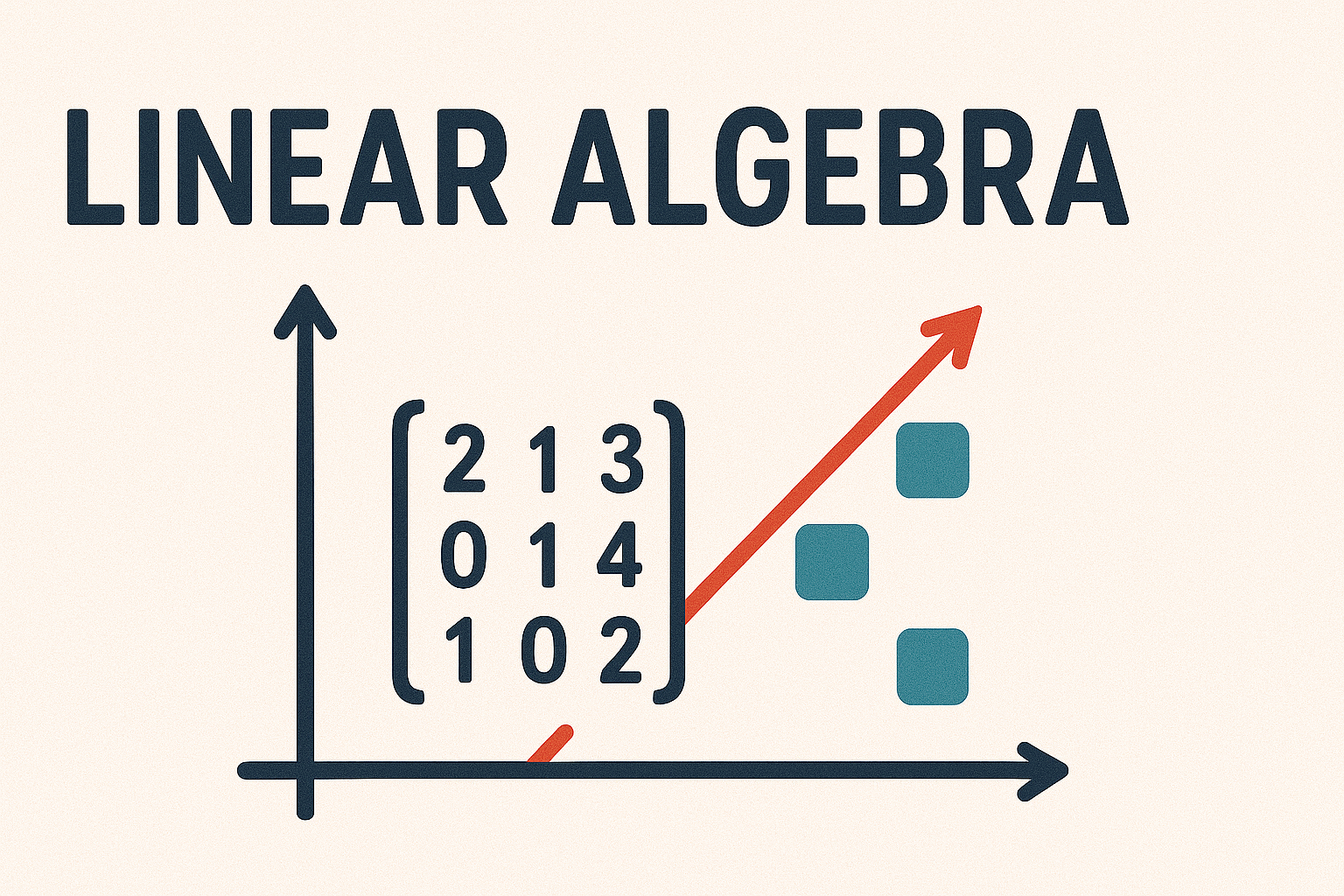5.5. Vector spaces exercises#
Answer the following exercises based on the content from this chapter. The solutions can be found in the appendices.
Exercise 5.1
Prove that the axioms of the vector space \(\mathbb{R}^3\) hold.
Exercise 5.2
Using the subspace condition, determine whether the following subsets of \(\mathbb{R}^3\) are subspaces:
(a) \(U = \{ (x, y, 0) : x, y \in \mathbb{R} \}\)
(b) \(V = \{ (1, 2, 0) \}\)
(c) \(W = \{ (0, y, 0) : y \in \mathbb{R} \}\)
(d) \(X = \{ (x, y, z) : y = |x|, x, y, z \in \mathbb{R}\}\)
Exercise 5.3
Which of the following sets are subspaces of \(M_2(\mathbb{R})\)?
(a) \(A = \left\{ \begin{pmatrix} a & b \\ c & d \end{pmatrix} : a, b, c, d \in \mathbb{R}, a + b = 1, \right\}\)
(b) \(B = \left\{ \begin{pmatrix} a & b \\ c & d \end{pmatrix}: a, b, c, d \in \mathbb{R}, a = c = d \right\}\)
(c) \(C = \{ A \in M_{2\times 2} : A^2 = A \}\)
Exercise 5.4
Prove that \(\left\{ (1, 2, 0), (0, 5, 7), (-1, 1, 3) \right\}\) is a basis for \(\mathbb{R}^3\) and represent the vectors \((0, 13, 17)\) and \((2, 3, 1)\) with respect to this basis.
Exercise 5.5
Extend \(\{ (1, 1, 2, 4), (2, -1, -5, 2)\}\) to a basis of \(\mathbb{R}^4\).
Exercise 5.6
Suppose that \(W = \{\mathbf{u}, \mathbf{v}, \mathbf{w}, \mathbf{x}, \mathbf{y}\}\) is a subspace of \(\mathbb{R}^n\) where
Find a basis for \(W\) and determine \(\dim(W)\).
